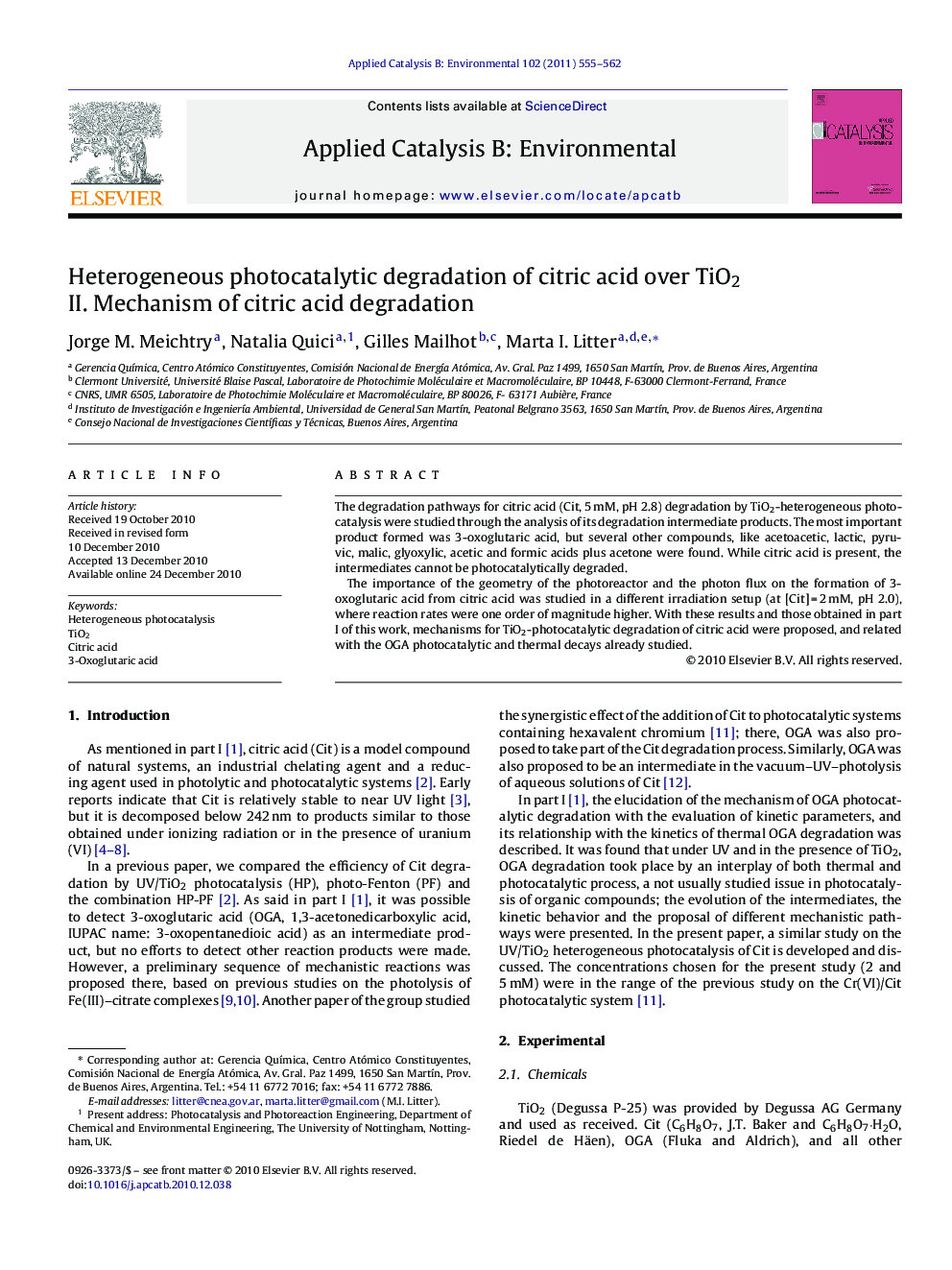| Article ID | Journal | Published Year | Pages | File Type |
|---|---|---|---|---|
| 47122 | Applied Catalysis B: Environmental | 2011 | 8 Pages |
The degradation pathways for citric acid (Cit, 5 mM, pH 2.8) degradation by TiO2-heterogeneous photocatalysis were studied through the analysis of its degradation intermediate products. The most important product formed was 3-oxoglutaric acid, but several other compounds, like acetoacetic, lactic, pyruvic, malic, glyoxylic, acetic and formic acids plus acetone were found. While citric acid is present, the intermediates cannot be photocatalytically degraded.The importance of the geometry of the photoreactor and the photon flux on the formation of 3-oxoglutaric acid from citric acid was studied in a different irradiation setup (at [Cit] = 2 mM, pH 2.0), where reaction rates were one order of magnitude higher. With these results and those obtained in part I of this work, mechanisms for TiO2-photocatalytic degradation of citric acid were proposed, and related with the OGA photocatalytic and thermal decays already studied.
Graphical abstract.Figure optionsDownload full-size imageDownload as PowerPoint slideResearch highlights▶ By UV/TiO2 citric acid is degraded almost quantitatively to 3-oxoglutaric acid. ▶ Acetoacetic, lactic, pyruvic, malic, glyoxylic, acetic and formic acids plus acetone are intermediate products. ▶ While citric acid is present the intermediates are not photocatalytically degraded. ▶ Simple kinetic equations can explain the citric acid photocatalytic degradation. ▶ Using a different irradiation setup, similar kinetic parameters are obtained.
